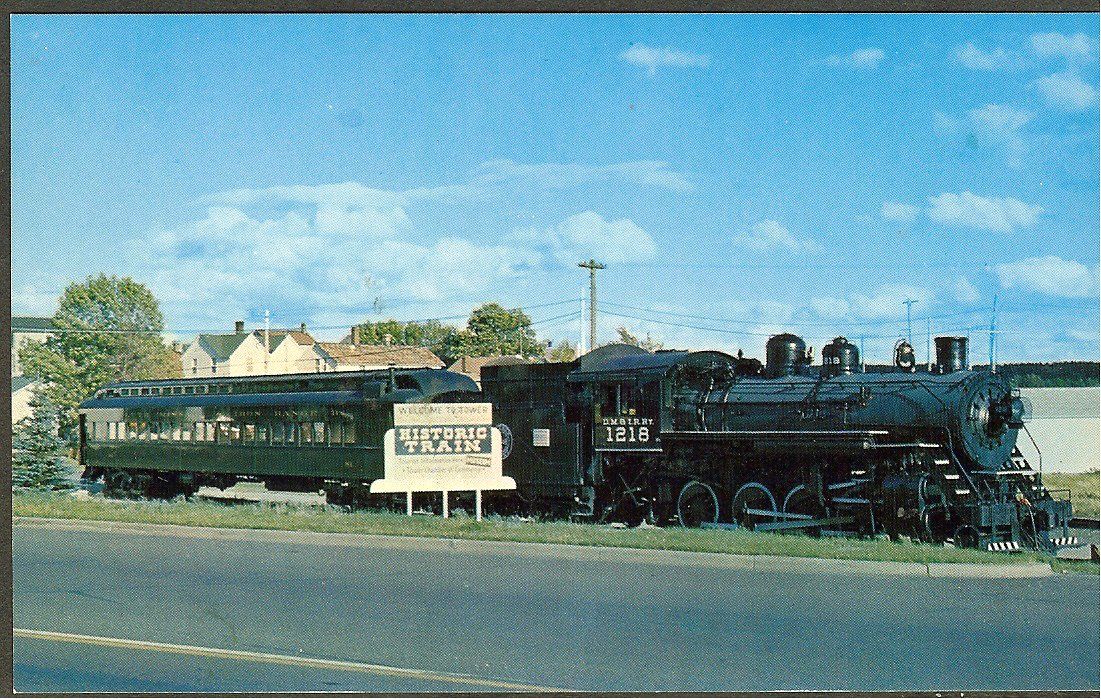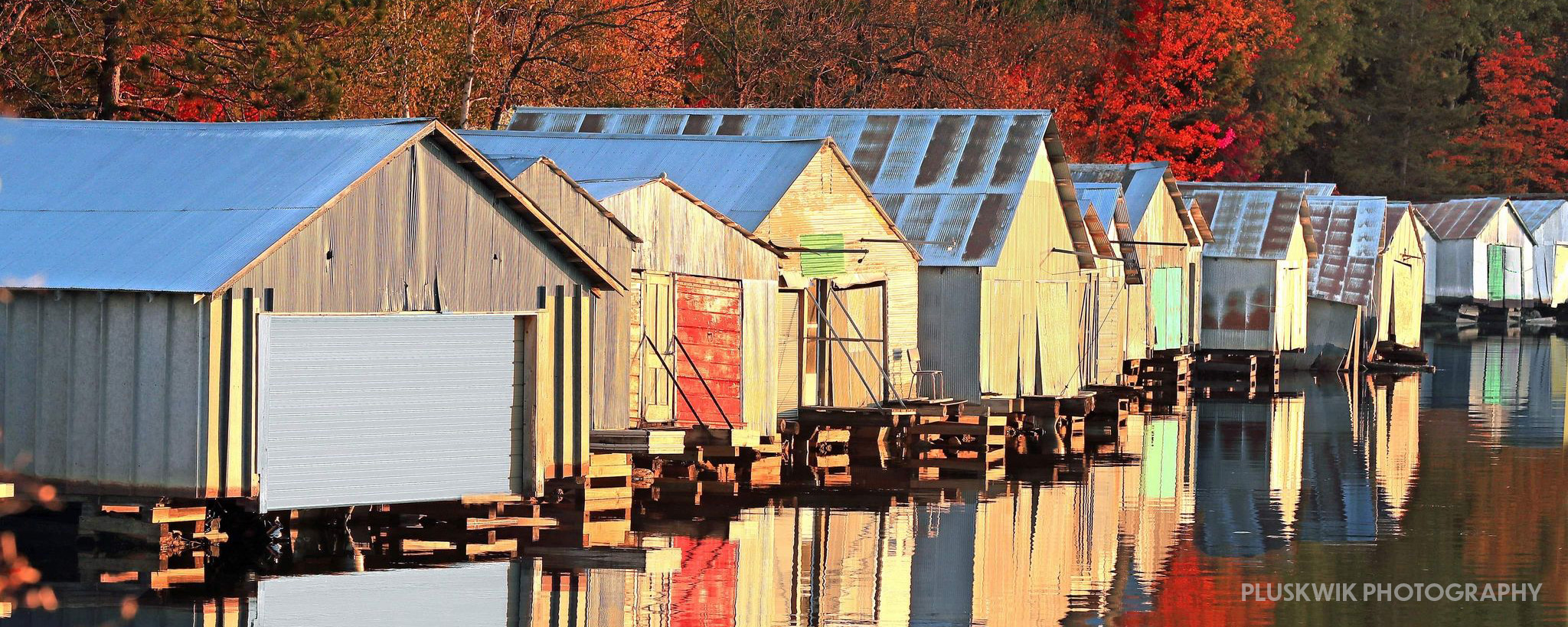Coach 81
Passenger car Coach 81 was built by American Car and Foundry in 1911 as part of a 6-car order 80-85 for the Duluth Missabe and Northern Railway (DM&NR). This car was one of first passenger coaches of all-steel construction placed in service by the DM&NR. This all-steel coach was much heavier than the wooden coaches it replaced weighing 150,400 pounds. It had a seating capacity of 84 passengers. Coach 81 was regularly in service from 1912 to 1953 to haul mail, people, pets and luggage from Duluth and Two Harbors to Tower and Ely.
In. the early years, the fare ranged from 55 cents to $1.10, depending on luggage. The DM&NR brought prospectors, immigrants, storekeepers, lumberjacks, preachers, traveling salesmen and unattached ladies looking to comfort the gentlemen to Tower, the largest city north of Duluth that had a vibrant Main Street with no less than 28 saloons. Folks would also come to work at the neighboring mining town of Soudan, two miles to the east.
Passenger revenues reached an all-time high during 1920. At this time, the DM&NR (or “Missabe” as it was known) was running 3 trains a day in both directions between Duluth and the Mesabi Range, each offering a parlor and buffet car service that was second to none in the entire Northwest. The Missabe’s dollar steaks were reportedly fabulous.
While riding on the train the Conductor’s word was law. Only the Conductor or his official assistant could open the windows. Parents were expected to control their children. If they did not do so, the Conductor put the parents and the children off the train. The same went for any barking dogs. Smoking was allowed only in a special “Smoking Section” of Coach 81 in the back of the car. The Conductor locked Coach 81’s restrooms when the train stopped in the station. People needing to use the restrooms would have to use those in the train station. When the train was 3 miles out from the station the Conductor unlocked the ones on the train.
Coach 81 eventually was taken out of regular service on the DM&NR. Still able to travel, the Coach 81 was occasionally put in use for train trips taken by fans of “old fashioned” steam engine travel.
In 1962, Donald Shank, who became DM&NR Vice President and General Manager in 1964, spearheaded the donation of Coach 81 to the Tower-Soudan Historical Society (TSHS). Julius Abrahamson, a local resident of Tower, who worked for the railroad at the time, was the liaison for the TSHS.
The TSHS decided to use it as a museum and removed all but the “Smoker Section” seats in order to provide room for museum displays. They also repainted Coach 81.
In time, physical deterioration from weather and vandalism –broken windows and peeling paint—made it difficult for the TSHS to maintain Coach 81 as a museum. In 2007 the Train Depot building became available and the museum was moved from Coach 81 into the Depot.
Coach 81 was in terrible condition. The upholstery was worn and the window shades were torn and crusty with age. Restrooms were rusty and hanging with peeling paint. In the summer of 2008, TSHS members decided during strategic planning sessions that restoration of the train cars, in particular, Coach 81, was a priority. Due to the lead paint and the size of the project, it was determined that professional services were required to restore Coach 81.
Generous grants from the Iron Range Resources and Rehabilitation Board, Minnesota Power, Lake Country Power and Cleveland Cliffs enabled TSHS to engage professional assistance in the summer of 2009 to scrape, sand and repaint the interior. A plywood floor was installed where the old linoleum was removed. Steve Abrahamson, Mayor of Tower, personally financed and replaced the windows. Volunteers removed layers of paint and polished the brass hardware on the inside of Coach 81.
Quilt raffle ticket sales, donations from local organizations, businesses and citizens, Memorial Plaques, Diane Power’s Challenge Grants, and the Depot Days festivals all contributed to the restoration of the Coach car.
Metal-based tables in vintage style were constructed by volunteers. The deteriorated upholstered seats in the Smoker’s Section were reupholstered. Materials were selected to resemble 100-year old leather. Even though the seats had been reupholstered at least twice in the past the original horse hair stuffing was still intact and useable. A cupboard full of dishes including tea pots, cups and saucers was donated.
Volunteers worked endless summers in 2011 and 2012 to restore the Coach Car’s exterior. The level of detail to restore the exterior included sawing off the bolts that held the upper window screen frames; vacuuming sand from inside the sill plates; repairing the rusted areas inside the windows and in the metal sides of the car; priming and painting and replacing the upper screens with new aluminum material.
In spring 2015, the exterior of the Coach Car had the lead-based paint removed by professionals and it was professionally painted “Pullman Green.” Letters and numbers for the sides of the train were made locally and affixed to the train by volunteers. A heating and air conditioning unit was added and financed through various grants.
The TSHS decided to rent out the space in Car 81 for parties, gatherings, lectures, club meetings and other events. This unique venue has proven to be a wonderful addition to the community.
The TSHS is currently updating Car 81 with exterior and interior painting, lighting and improving the tables and chairs for public events.
Coach 81 is open and available to tour at no cost during the day from Memorial Day to Labor Day. It serves as a mini ”Welcome Center” with information, brochures and maps of the local area on summer weekdays when the Train Depot Museum is closed.
Coach 81 It is available for rent for receptions, classes, teas, birthday parties or meetings. Please go to Rent our Spaces for further information about renting this community treasure for your next event.

